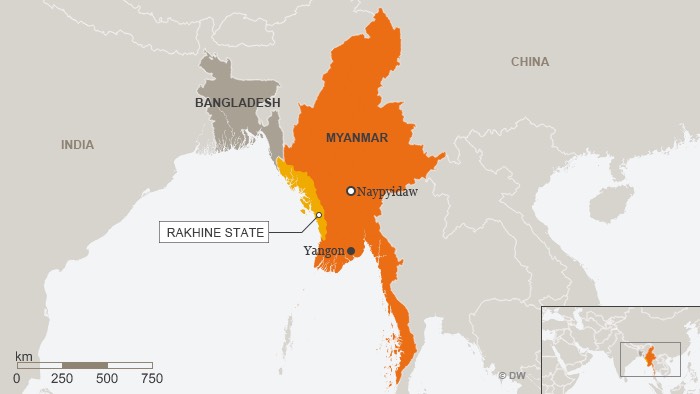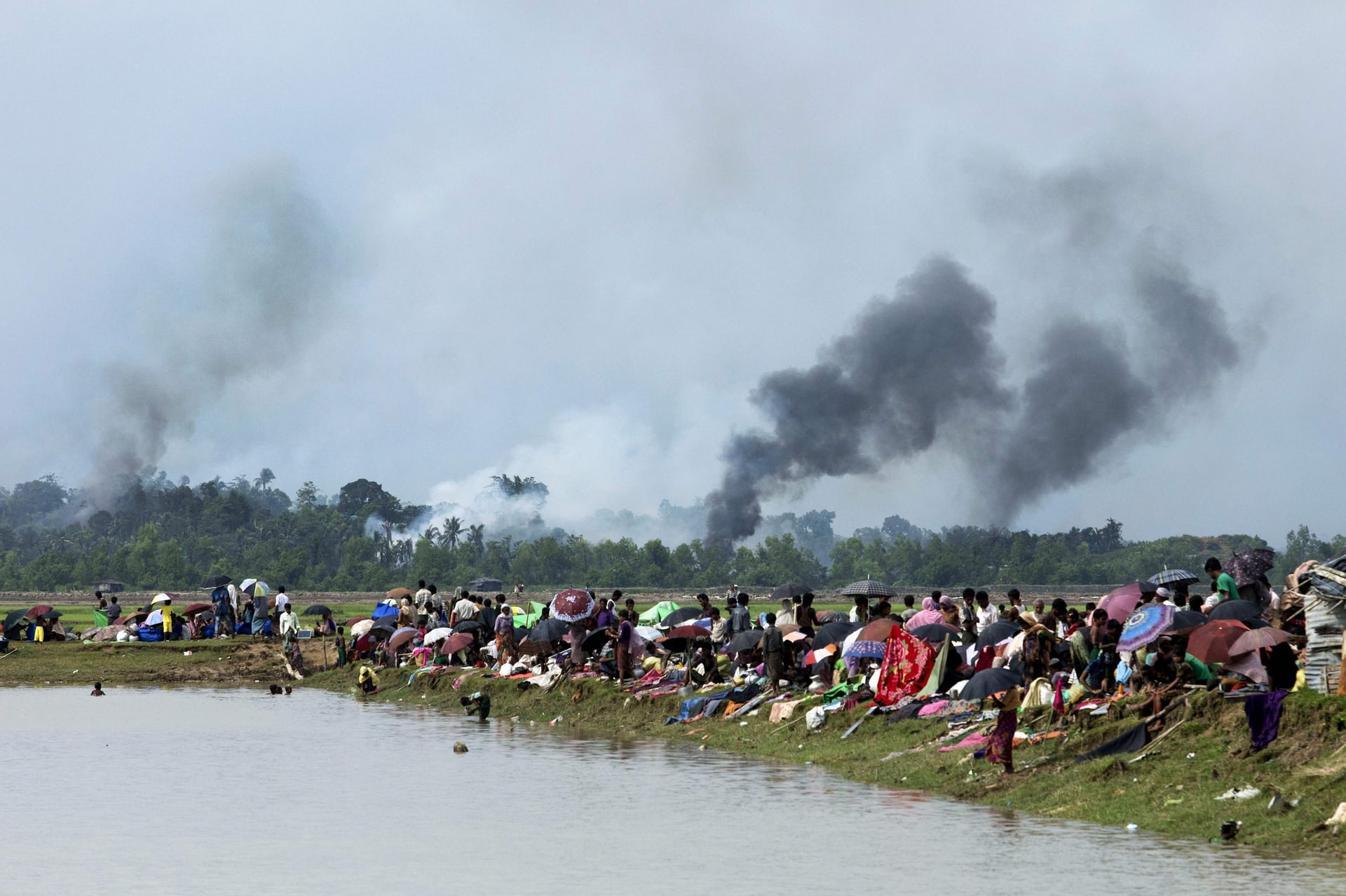

Who are the Rohingya?
Described as the world’s most persecuted people, 1.1 million Rohingya people live in Myanmar. They live predominately in Rakhine state, where they have co-existed uneasily alongside Buddhists for decades.
Rohingya people say they are descendants of Muslims, perhaps Persian and Arab traders, who came to Myanmar generations ago. Unlike the Buddhist community, they speak a language similar to the Bengali dialect of Chittagong in Bangladesh.

The Rohingya are reviled by many in Myanmar as illegal immigrants and they suffer from systematic discrimination. The Myanmar government treats them as stateless people, denying them citizenship. Stringent restrictions have been placed on Rohingya people’s freedom of movement, access to medical assistance, education and other basic services.
What has been happening to them?
Violence broke out in northern Rakhine state on 25 August when 100 armed Muslim insurgents attacked government forces. In response, security forces supported by Buddhist militia launched a “clearance operation”.
Myanmar’s security forces and Muslim minority Rohingya militants accuse each other of burning down villages and staging mass killings.
Nearly 400 people have been killed, the majority of them insurgents, according to defense officials. The sectarian violence, the worst in years, has forced thousands of people to take refuge in neighboring Bangladesh.
“Roughly 60,000 have arrived in Bangladesh since the violence erupted on August 25,” said UNHCR spokeswoman Vivian Tan on September 2.
Refugees have spoken of massacres in villages, where they say soldiers raided and burned their homes. The government claims the Rohingya have burned their own homes and killed Buddhists and Hindus, a claim repeated by some residents.
Aid agencies have warned of a growing humanitarian crisis in overstretched border camps and of the dangers facing Rohingya people trapped in conflict zones.
How many have been killed, injured or forced to flee?
The military has reported that 400 people have been killed in the violence. The UN says 123,000 people have fled to Bangladesh. Those who have made it to the border have walked for days, hiding in jungles and crossing mountains and rivers. Many are sick and some have bullet wounds.
1M #Rohingya at risk of genocide, as army carries out ethnic cleansing. When victims are Muslim, silence of world leaders is defeaning. pic.twitter.com/ISEEnBVj33
— Rula Jebreal (@rulajebreal) September 3, 2017
More than 30,000 Rohingya are estimated to have sought shelter in the refugee camps of Kutupalong and Nayapara in Bangladesh, which are now believed to be full. Many others are living in makeshift sites and local villages.
An unknown number could still be stranded in a narrow strip of no man’s land that separates the two countries, where access to aid is limited. Around 400,000 stateless Rohingya people are thought to be trapped in conflict zones.
We need every single person – to use your voice. Your platform – to help stop the genocide happening in Myanmar now. #SaveRohingyaMuslims
— Imraan Siddiqi (@imraansiddiqi) September 4, 2017
On Tuesday the UNHCR, the UN’s refugee agency, said it was “gravely concerned”about the continuing conflict and about reports that civilians had died while seeking safety. On Monday the UN said its aid agencies had been blocked from supplying life-saving supplies such as food, water and medicine to thousands of civilians in northern Rakhine state.
Why are Rohingya stateless?
About 10 percent of the world’s stateless people live in Myanmar and Rohingya.
In 2014, the United Nations welcomed political and economic reforms in Myanmar but expressed “serious concern” over the plight of the Rohingya community. The UN has demanded “equal access to full citizenship for the Rohingya minority” and ensure their equal access to all services.
But Myanmar’s government has so far refused to grant citizenship to the Rohingya. It views the estimated 1.1 million people as illegal immigrants from neighboring Bangladesh. Myanmar also objects to the use of the term “Rohingya” in any UN resolution and says it makes the government’s efforts more difficult in addressing the issue.

Myanmar says it is ready to grant Rohingya Muslims citizenship if they identify themselves as Bengalis – a term which members of the minority group object to strongly.
The Rakhine Advisory Commission, headed by former UN Secretary-General Kofi Annan, released its 63-page report last month, noting the biggest obstacle to peace in Rakhine is the issue of citizenship.
“If this issue is not addressed, it will continue to cause significant human suffering and insecurity, while also holding back the economic and social development of the entire state,” the report said.
The commission called on Myanmar’s government to “establish a clear strategy and timeline for the citizenship verification process.” In addition, the authorities should clarify the status of those whose citizenship has not been accepted and clarify whether it meets the international standards, it urged.
The commission specifically recommended the revision of the 1982 citizens’ rights law, because the classification of a citizen in it is complicated and often tied to ethnicity.
When did the conflict take a violent turn?
In 2012, clashes between the Rohingya and Buddhist nationalists led to scores of deaths, forcing tens of thousands of Rohingya to flee to Bangladesh, Malaysia, Thailand and Indonesia. Some 200,000 people – mostly Rohingya – have been living in camps in Rakhine since the 2012 clashes.
In October last year, Rohingya militants attacked several security checkpoints and killed scores of police officers. Myanmar’s security forces responded by launching counter-terrorism operations against insurgents. Human rights groups, such as Human Rights Watch and Amnesty International, said these operations involved arbitrary killings, systematic rapes, the burning of houses and forced expulsions of locals.
According to the UN, around 87,000 Rohingya fled to Bangladesh following the start of the October violence. The numbers do not include the most recent Rohingya exodus to Bangladesh.
Hattip to The Guardian, Deutsche Welle












